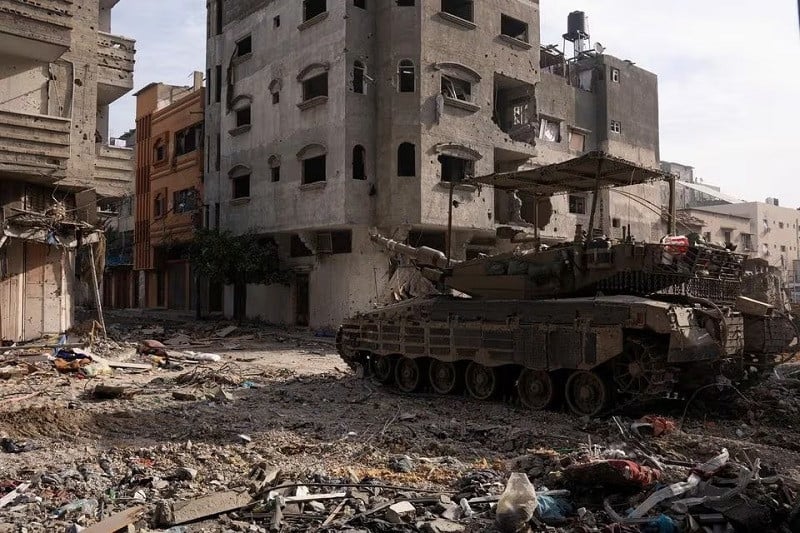According to militants and locals, there was intense combat along the entire coastal strip during the Israeli attacks. Communications were cut off for a fourth day, making it difficult to get medical assistance to the injured.
The Palestinian Red Crescent stated on X that “the communication blackout in Gaza is the longest since the start of the Israeli escalation,” adding that shelling has also hindered its workers. Later, telecom operators claimed that service was being gradually restored in the central and southern regions.
The news that Israel’s spy head had spoken with Qatar’s prime minister on Friday, who arranged hostage releases in exchange for a week-long ceasefire and the release of Palestinian inmates, increased hopes for peace on Saturday.
Israel and Qatar meet Bringing up the Possibility of Holding Hostages in Gaza
In a second encouraging development, officials said that on Sunday, the Kerem Shalom crossing between Israel and Gaza opened to assistance vehicles for the first time since the start of the conflict, doubling the quantity of food and medication that is sent to Gazans.
However, Israel raised doubts about the distribution of the supplies, accusing relief workers of failing to distribute aid that had crossed from Egypt. Israeli Prime Minister Benjamin Netanyahu also threatened to “fight to the end” in response. Aid organizations claim that the violence has affected the distribution of aid.
While Israel keeps up its bombardment, Hamas declared that it would not talk about releasing any more of the prisoners taken during its fighters’ raid into southern Israel on October 7.
Deadly Smashes
24 people were murdered and numerous more were injured in Israeli missile strikes on the Shehab family’s home in the Jabalia refugee camp in northern Gaza, according to the head of the health ministry, who was quoted by Hamas Aqsa radio.
Among the dead was the son of Islamic Jihad’s spokesman, Dawoud Shehab, who is an ally of Hamas, an official from the organization told Reuters.
Numerous individuals were murdered or injured in the Shebab family house and other adjacent locations, according to a medic.
He spoke over the phone using an e-sim that can link to outside networks.
“We believe the number of dead people under the rubble is huge but there is no way to remove the rubble and recover them because of the intensity of Israeli fire,” he added, declining to provide his name out of fear of retaliation from Israel.
Israeli losses
Following the start of the ground war on October 27, when tanks and infantry started to advance into Gaza’s cities and refugee camps, Israel’s military said on Sunday that 121 troops had lost their lives.
During his weekly cabinet meeting, Netanyahu read aloud a letter he said was written by the families of fallen soldiers.
It is your mandate to fight. He cited them as stating, “You do not have an order to stop in the middle,” to which they replied, “We will fight to the very end.”
The number of casualties is about double that of the 2014 ground offensive, indicating the extent of the incursion into the enclave the efficacious employment of guerrilla tactics, and a heightened armament by Hamas.
The Israeli military said its troops had found weapons and a tunnel used by fighters to attack troops in Shejaia, a suburb east of Gaza City in the north, and destroyed a weapons storage facility in the home of a Hamas operative.







